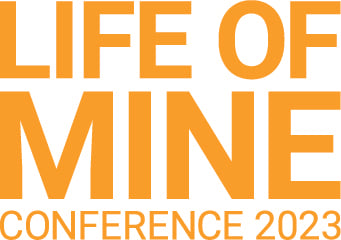Five not-to-be-missed presentations at Life of Mine 2023
Gain a deeper insight into holistic approaches and technical innovations currently optimising the life cycle of a mine, now and in the future.
AusIMM’s Life of Mine Conference 2023 will explore new and important themes, diving into stimulating topics such as closure, rehabilitation, decarbonisation, the circular economy, regional approaches, and more.
This highly technical conference is made by industry for industry, and we are excited to share with you our best program to date! In anticipation, we have picked out five not-to-be-missed presentations which we think you will love!
 Shifting Post-mining Land Use Planning, from Mine Site to Regional Scale
Shifting Post-mining Land Use Planning, from Mine Site to Regional Scale
Presentation by Dr Sandy Worden | Session 2, Day 1
Mines in Queensland are transitioning to the progressive rehabilitation and closure plan (PRCP) framework. Mine operators are required to select and justify appropriate and viable post-mining land uses (PMLUs) following consideration of the surrounding landscape, community views and the objectives of local and regional planning strategies. The new approach offers opportunities for considering innovative PMLU options and collaborative use of post-closure mine assets, such as infrastructure, dams, and residual voids.
Consideration of regional planning strategies will require a shift in thinking as mine closure is regulated and planned on an individual site basis and selection of PMLUs are commonly considered from this perspective. Planning at regional rather than site-specific scale offers strategic advantages, including the ability to align PMLU selection with the regional context and stakeholder aspirations; address cumulative environmental and socio-economic impacts; consider options that are only viable at scale (i.e. across larger geographic areas); establish more extensive and connected ecological habitat corridors; reinstate larger expanses of functional agricultural land; and optimise regional resources.
This paper presents the findings from a multidisciplinary project that identified PMLU options within Queensland’s four mining regions: the North West Minerals Province, North Queensland, Bowen Basin and Clarence-Moreton and Surat Basin.
 Risks beyond relinquishment – quantifying post-relinquishment management and maintenance costs
Risks beyond relinquishment – quantifying post-relinquishment management and maintenance costs
Presentation by Michael Cramer | Session 4, Day 1
There is increasing focus on the residual environmental liabilities associated with mining projects following site relinquishment (termed surrender in Queensland). Even sites that have been rehabilitated to a high standard are not completely risk free. As well as ongoing, post-relinquishment monitoring and maintenance costs, considerations should include how costs associated with potential risk event occurrence can be quantified and how provisioning should be undertaken to minimise the risk to the state and to taxpayers.
In Queensland, once a resource site is fully rehabilitated and meets its environmental authority conditions or rehabilitation completion criteria, it can be surrendered. During the surrender process any ‘residual risks’ must be considered, and, if requested, a payment given to the government to cover any ongoing costs.
Accent Environmental, in conjunction with Lane Associates, was engaged by the Queensland Government to develop a Residual Risk Calculator for the Queensland resources industry. The calculator uses detailed user inputs to estimate post-surrender management requirements and liability at resource sites.
If residual environmental risks can be identified, quantified and managed through pragmatic regulatory tools and effective provisioning, site relinquishment/surrender can be achieved without compromising environmental and social outcomes or exposing the state to unreasonable financial risk.
 Mine Land Rehabilitation Authority, Reducing the Risk for Victoria, Australia
Mine Land Rehabilitation Authority, Reducing the Risk for Victoria, Australia
Presentation by Dr Jennifer Brereton | Session 5, Day 2
The Mine Land Rehabilitation Authority is the independent overseer of Victoria’s declared mine rehabilitation. Currently, only the Latrobe Valley’s three brown coal mines are declared, with each mine at a different stage of rehabilitation and closure planning: Hazelwood ceased mining in 2017, Yallourn is scheduled to end mining in 2028 and Loy Yang in 2035.
The three declared mines are very large, close together and present significant environmental risks that must be mitigated during rehabilitation and post closure. In addition to fire risks, the brown coal mines are inherently unstable and require continuous monitoring and management of ground movements and groundwater pressures.
The Authority has a number of roles including:
o Overseeing Mine rehabilitation
o The requirement to create a register of rehabilitated mine land that defines the controls to be implemented by future landowners post closure
o Possible ownership of high-risk land
o Assisting with the assessment of post-closure funds
o Working with, listening to and involving the community in all matters related to mine rehabilitation and its long-term use
The Authority is but one example of several models that have been or are being implemented around the world that are all predicated on the specific conditions that prevail in the different regions. The different models present common themes that highlight the complexity of transitioning away from mining to future land uses that deliver positive outcomes for affected communities. Meeting in perpetuity obligations underpin all models.
 Microalgae in Mining: Environmental and Social Opportunities
Microalgae in Mining: Environmental and Social Opportunities
Presentation by Dr Alan Levett | Session 9, Day 3
The environmental, social and governance (ESG) obligations of mining companies promotes the consideration of water and land resources as well as the post-mining employment opportunities following the cessation of mining operations.
Microalgae are microscale photosynthetic microorganisms that can survive in a range of environments. Microalgae production is already a commercially viable process for high-value products including vitamins, cosmetics, and food supplements. This work highlights the environmental and social opportunities to use near-neutral pH mine-influenced waters to grow microalgae in a purpose-built ‘raceway’ track system. Living microalgae can progressively improve water quality by taking up sulfate and soluble metals (i.e., cobalt, nickel, manganese) via bioaccumulation. After harvesting, the microalgae can be used to treat acidic and metalliferous mine waters. Alternatively, the microalgae can be converted into a liquid fertiliser similar to commercially available Seasol® and/or converted into biological charcoal (biochar), which can also be used as a soil amendment. Liquid biofertilisers can be used to substantially accelerate soil formation from mine waste, reducing the topsoil insufficiencies on many mine sites.
Microalgae grow rapidly, sequestering CO2 up to 10 times faster than terrestrial plants (such as sugarcane). Growth rates for microalgae are ~0.015 kg/m2/yr, and microalgae consume ~1.83 kg·CO2 to produce ~1 kg of biomass. Therefore, a 40 ha microalgae production facility would sequester ~4,000 t·CO2/yr into the microalgae. When the microalgae are converted to a biofertiliser, they assist in accelerating soil carbon sequestration and re-vegetation growth rates, both of which further sequester CO2. Microalgae production facilities have a lifespan of approximately 30 years. There are potential economic, environmental, and social incentives for a microalgae production facility to support progressive mine rehabilitation during mine operation, after which the facility could be transferred to a third party, providing an alternative industry in regional areas for the balance of the microalgae facilities lifespan.
 Viable and Feasible Decarbonization; Tent Mountain Coal Mine re-purposing for the clean energy economy
Viable and Feasible Decarbonization; Tent Mountain Coal Mine re-purposing for the clean energy economy
Presentation by Ben Saffron | Session 10, Day 3
The Tent Mountain Renewable Energy Complex development is a novel, real world approach to re-imagining and then physically re-purposing an idle coal mine. It takes advantage of natural topography and previously disturbed areas, market, and political support for both clean hydrogen fuel and a grid stabilizing energy storage system.
The development is one that achieves many objectives across Indigenous, social, political, environmental, and energy transition elements. Importantly, it is a both financially viable and technically feasible decarbonization.
It is a compelling transformation that is an example of what is possible when multiple, diverse skills and thinking are brought together to solve a complex challenge of transforming a legacy mine.






